What The Tech?! Mobile Telephones
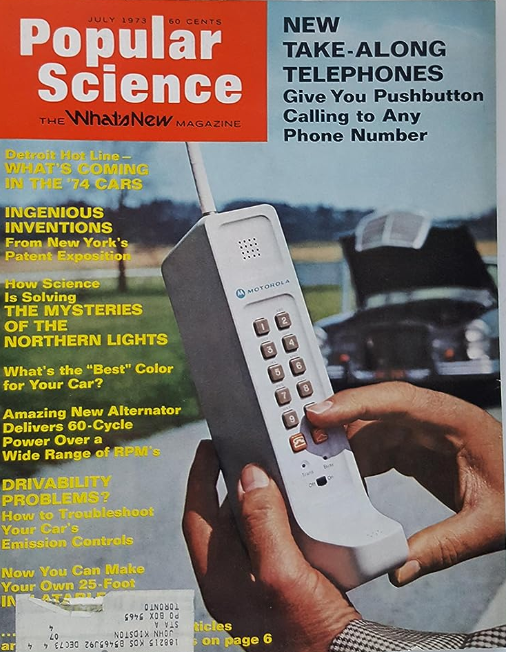 Popular Science went crazy for the mobile phone. Source: Wikipedi
Popular Science went crazy for the mobile phone. Source: Wikipedi
The evolution from landline to mobile device dragged us into the modern age.
If you’re a regular What the Tech reader, you may have noticed that our early pieces have primarily focused around communications, with satellites and fiber optics just some of the subject material from our earlier pieces. Today we’ll continue that trend by look at the early stages of mobile phone development prior to smartphones becoming the next big thing.
The Early Days
While it may come as a surprise to many, the first steps in actual mobile phone development occurred shortly after WW2, when US based AT&T built the first base station and cell units for development purposes. While these devices technically fit the criteria for mobile phones, they were rudimentary technology that in a lot of ways were more radio than phone like. Working off a decentralized network, these bulky early phones were used in localized communication experiments with no way of being integrated into the existing telephone network. They were also large devices, incapable of being mass produced due to the size of electronic components of the day. Like many pieces of wartime technology, it would take until the transistor was properly integrated before it would begin reach it’s peak and realistically be available to the masses after mass production.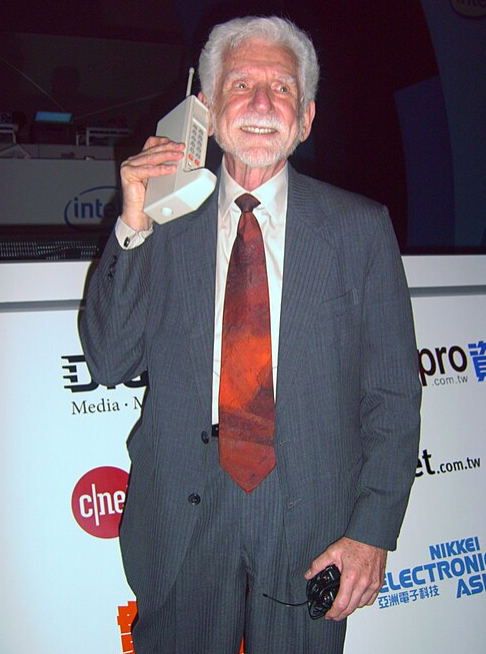 Martin Cooper with the Dynatac8000 in 2007. Source Wikipedia
Martin Cooper with the Dynatac8000 in 2007. Source Wikipedia
The first steps to this occurring happened in 1973, when Martin Cooper, a Motorola employee used an experimental device to place the worlds first mobile telephone call. This call also happened to be the first known case of mobile trolling, with Mr Cooper placing his call directly to Dr Joel S Engel at AT&T, a direct competitor to Motorola at the time.
The device used for this call was an experimental Motorola machine, which whilst needing some further development would eventually end up becoming the Motorola Dynatac8000, the world’s first commercial mobile phone. While this was a huge leap forward for technology at the time it’s important to try obtain a clear picture of just how rudimentary these early devices still were. The Dynatac for instance, despite being commercially available weighed in at 1.1kg, was over 25cm long and had a battery talk time of just 30 minutes and would then take close to ten hours to charge.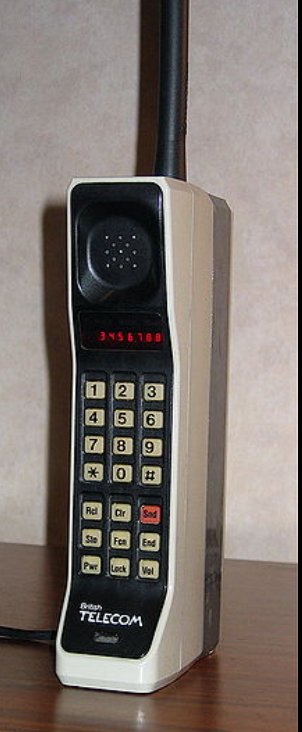 Gen 1. Motorola’s Dynatac8000. Source: Wikipedia
Gen 1. Motorola’s Dynatac8000. Source: Wikipedia
This wasn’t merely an aesthetics problem either. Early devices like the Dynatac ran on a backbone called the ADVANCE MOBILE PHONE SYSTEM or AMPS. AMPS was the first generation technology used to power mobile devices and was extremely inefficient, taking up large parts of the RF spectrum and using a channelized system to manage traffic control.
Being little more than a modified radio, AMPS was not renowned for it’s audio quality with atmospheric issues coming into play, and even interference from other channels causing problems. However as bad as the audio was, security was even worse as all that was needed to listen into these devices was a frequency relevant receiver. And while you might think an eavesdropper is bad, a subsequent exploit within AMPS that didn’t take long to find meant that by the late 80’s handsets were able to be cloned.
This caused a new issue as a cloned phone would operate on the network entirely the same as it’s normal sibling meaning many users had their devices signature modified, allowing covert illegal use at least until the next months bill arrived.
Despite what you’d expect, cloning an early era handset was a relatively simplistic affair although it did require some specialized equipment. This equipment could be used to intercept a handset’s Electronic Serial Number which could then be programmed into the device’s pair, allowing quick and easy network access. Although later CDMA technology attempted to address this issue, it would take some further time for handsets to achieve relative security and for encryption to achieve standardization. In the meantime, many carriers would add pin locking to their networks to secure them. It was around this point that Electronic Signature Detection was also added, allowing mobile providers an additional tool in detecting and blocking nefarious traffic.
CDMA Handsets & 2G: The Second Generation
The next generation of mobile devices took time to evolve beyond the AMPS standard, however the actual design of the accepted Gen 2 standard occurred much earlier. Known as Code Division Multiple Access or CDMA this IS-95 standard was a revolution compared to AMPS, providing a secure standard that was one of the first to efficiently use multiplexing, a relatively new technology for the civilian world at the time. Multiplexing was unique as it allowed many independent signals to be combined in to one transmissions, effectively allowing multiple devices to use the network, and would lay the grounds for the next generation of handset’s to use the network effectively which was an essential step on the road to mass adoption.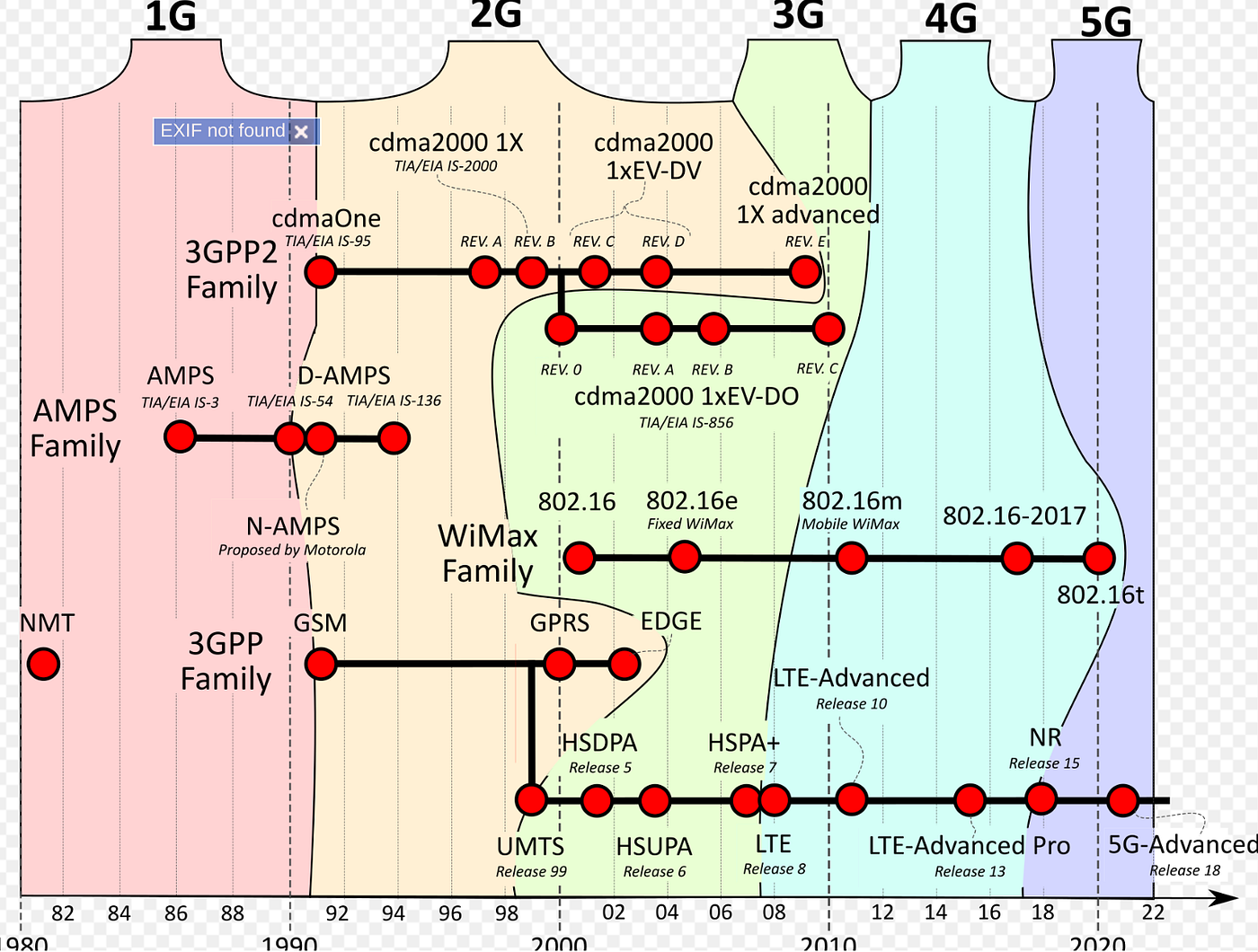 A quick breakdown of data formats used on the way to mass adoption of smartphones. Source: Wikipedia.
A quick breakdown of data formats used on the way to mass adoption of smartphones. Source: Wikipedia.
With CDMA came increased security, the ability to send and receive texts, as well as the first transition from an analogue signal to a digital signal, a huge leap forward for the time.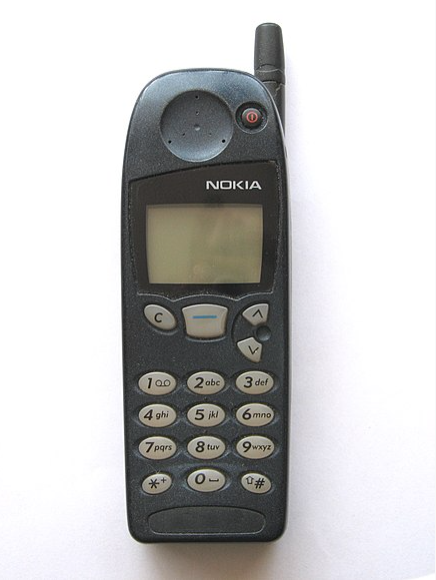 The 5110 was iconic in the late 90s. Source: Wikipedia
The 5110 was iconic in the late 90s. Source: Wikipedia
It’s also worth including here that the development of mobile devices may have looked somewhat different depending on where you lived. In North America and Australia, CDMA was a hugely important step on the path to smartphones. However in Asia and Europe, the 2G format appeared instead. While similar to CDMA in the sense that it was a digital signal that used multiplexing, the path to adoption was different here as 2G used a different form of multiplexing. Known as Time Division Multiplex Access or TDMA, this was one of the first genuine steps toward world wide synchronization of a mobile standard for manufacturers to adopt moving forward. And while CDMA had the capacity to send text messages, TDMA also allowed for the adoption of a Data Standard. This would lay the foundation for Multimedia Messaging Services, the first standard for sending pictures and videos via text message.
CDMA was used extensively though the late 90’s and into the 2000s before being passed over for the more secure and faster 3G upgrade. However while it’s an older standard, CDMA remains relevant today with countries such as Indonesia, Japan and South Korea still using CDMA in some places today. And for those who like the numbers, CDMA was capable of data transmissions speeds around 100kb/s with a max speed of 153kb/s.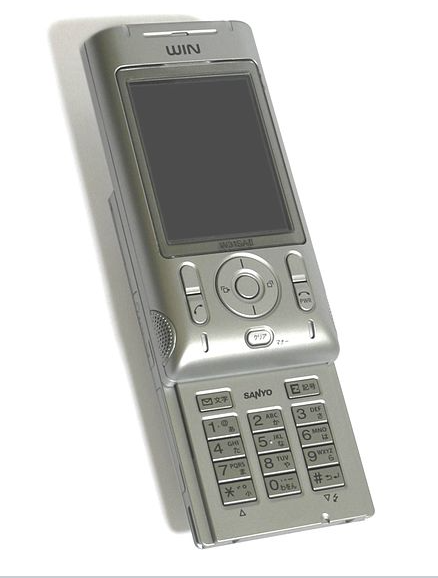 CDMA Standard Mobile Phone. Source: Wikipedia
CDMA Standard Mobile Phone. Source: Wikipedia
GSM Handsets: The Next Gen
While Global Standard Mobile or GSM handsets were invented reasonably early, due to the myriad of different formats that early mobiles used it would take time for this to standardize into what we see today.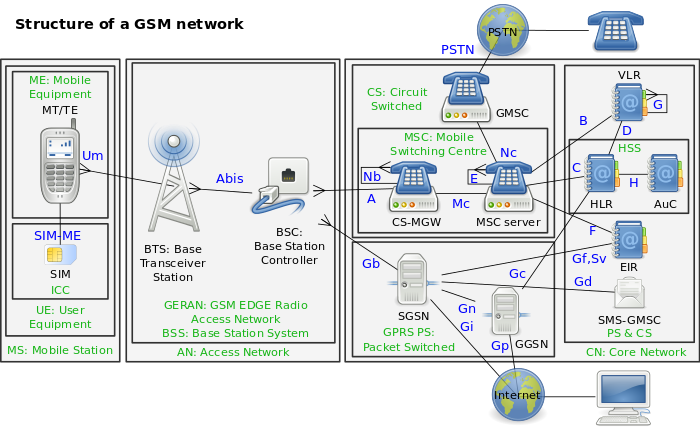 The GSM Network was a great leap forward for mobile data and network standardisation. Source: Wikipedia
The GSM Network was a great leap forward for mobile data and network standardisation. Source: Wikipedia
Originating in Finland in 1991, GSM was originally an attempted at standardizing European Communication with a standard that allowed for cross border operation. It would take nearly a full 2 decades for this technology to achieve mass adoption with the first standardization occurring within the 2G handsets that we referenced earlier. While the first GSM formats focused on voice codecs and effective use of network assets by handsets, by the late 2000’s the need for mobile data forced GSM beyond this initial goal, eventually morphing into a full blown voice and data network. More importantly for mass adoption, 3G GSM handsets were designed to a standard known as IMT-2000. This digital standard provided the first benchmarks for handsets, mandating standards for both reliability and data transfer speeds.
While it can be a little tricky to grasp the leap forward at each level, one of the best way’s to understand this is to look at the data transmission speeds of each standard. While our CDMA standard was capable of transmission speeds up to 153kbps, 3G GSM was a massive leap ahead of this providing data speeds of up to 384kbps for mobile stations and up to 2 mbps for fixed stations. If you’re wondering what this translates to in download speeds, for a 10 MB file using our CDMA system we’d be looking at around 10 minutes to complete that download. Where as if we use our 2mbps GSM standard, we can achieve that same download in around 4 seconds, a huge leap forward for mobile internet when it was released.
It’s at this point where we also start to regularly see Data only connections into the network, with USB capable mobile broadband modems starting to provide instant high speed data connections via mobile telephone towers.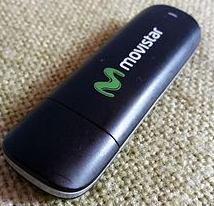 Remember these guys? Many mobile workers used 3G capable setups on the road. Source: Wikipedia.
Remember these guys? Many mobile workers used 3G capable setups on the road. Source: Wikipedia.
We also see the introduction of the Subscriber Information Module, the first evolution of today’s SIM card. Allowing users the ability to retain information after switching handsets, the SIM card was a small smart card type device that would allowing for programming of subscription and Phone Book information.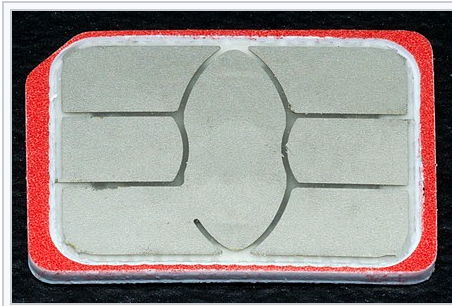 Nano Sim Card. The SIM was an essential part of GSM adoption. Source: Wikipedia
Nano Sim Card. The SIM was an essential part of GSM adoption. Source: Wikipedia
Today, Into the Future and Beyond:
With GSM providing the standard for worldwide adoption, as well as increasingly large variety of frequency bands giving the standard reliability and high speed data transmission capabilities the next steps in mobile telegraphy would come fast, with the evolution and implementation of both the 4G and 5G standards into the late 2000’s. These newer standards, which provided access to large parts of the spectrum that were previously unused were optimized for reliability and mobile broadband. This included the ability to provide high speed data services for streaming services and media downloads, providing remote workers and television fans with the foundations of the network that we see in place today.
The 4G network was also unique as it used a new type of switching standard that had not been seen previously. This standard, relied on the Internet Protocol standard for switching and controlling the network, a digital upgrade to the circuit switching methods used prior to that.
Generally speaking the difference between the two becomes a bit easier to understand due to the two different protocols used. Circuit Switching used a store and forward type system, re transmitting the message in it’s entirety. IP Switching used the same packet format used by the Internet today, breaking the message apart and transmitting it in “packets”. This is because IP switching is more efficient, and has better error correction over the methods of of old
Additional features include:
Scalable Channel Bandwidths up to 5–20 Mhz
Spread Spectrum Transmission Modes, and
Smooth Switching and Handovers across networks.
Data transmission speeds of up to 1 gbps, a multi-fold upgrade from the older technology we saw earlier.
While 4/5G is the current modern standard for transmission between towers and stations, future devices are expected to be continually refreshed with new technology as we’ve seen prior. Some of the new technologies we can expect to see in future handsets include Artificial Intelligence, Augmented Reality, Folding Screens and further integration of Siri style voice control services. From where we sit, the future for mobile technology still looks good!
🌟 Enjoyed this article? Support our work and join the community! 🌟
💙 Support me on Ko-fi: Investigator515
📢 Join our Telegram channel for exclusive updates or.
🐦 Follow us on Twitter
🔗 Articles we think you’ll like:
1. 5 Computer Viruses from the Early days of the Internet
2. What the Tech?! Fiber Optic
✉️ Want more content like this? Sign up for email updates here





































